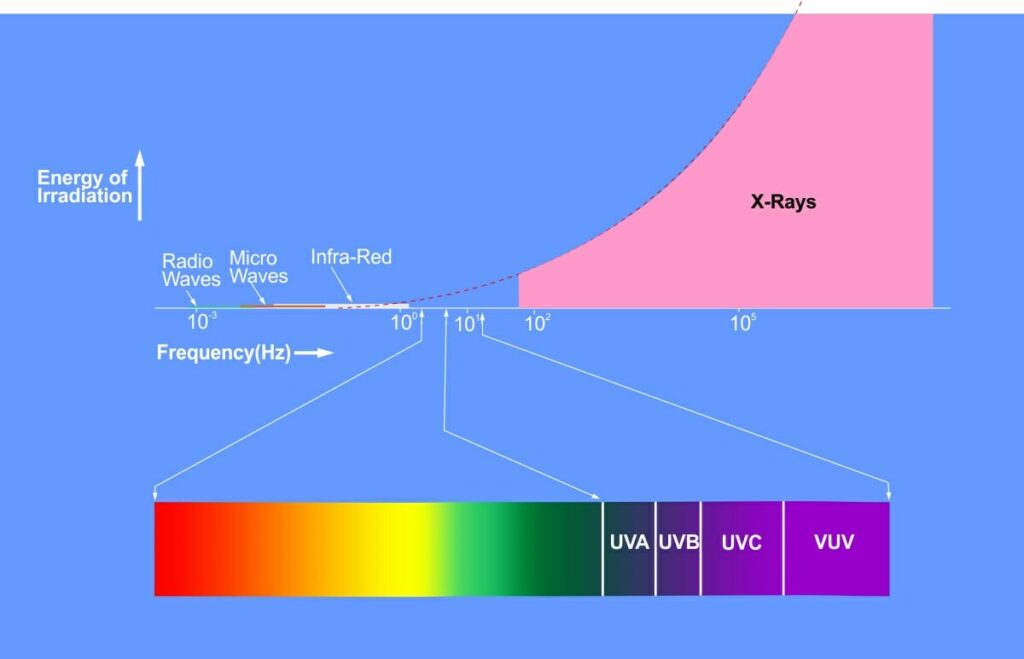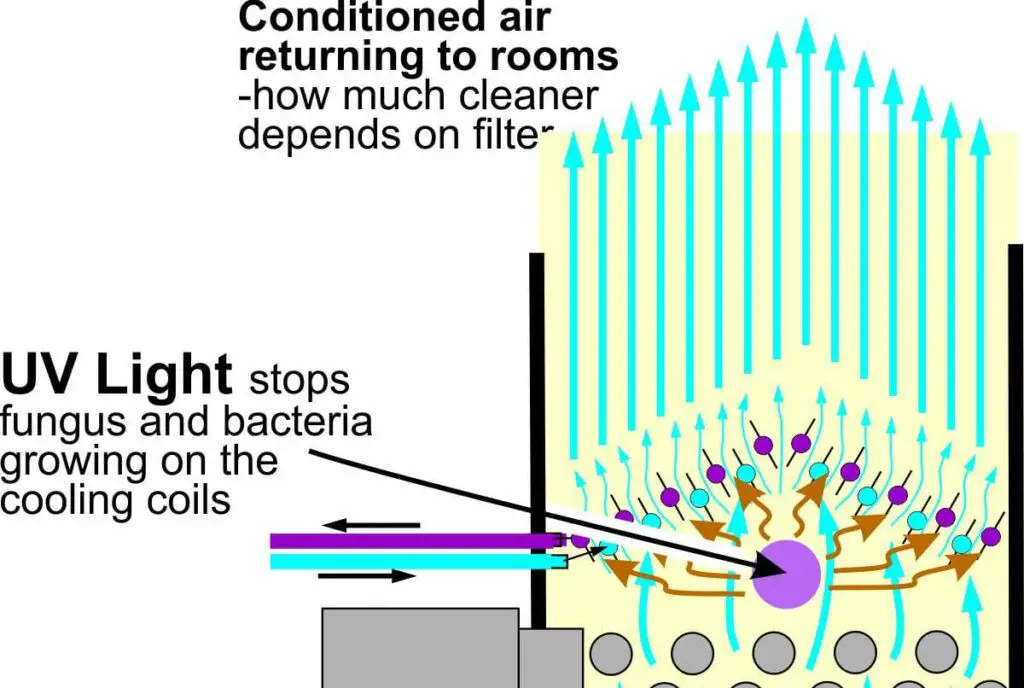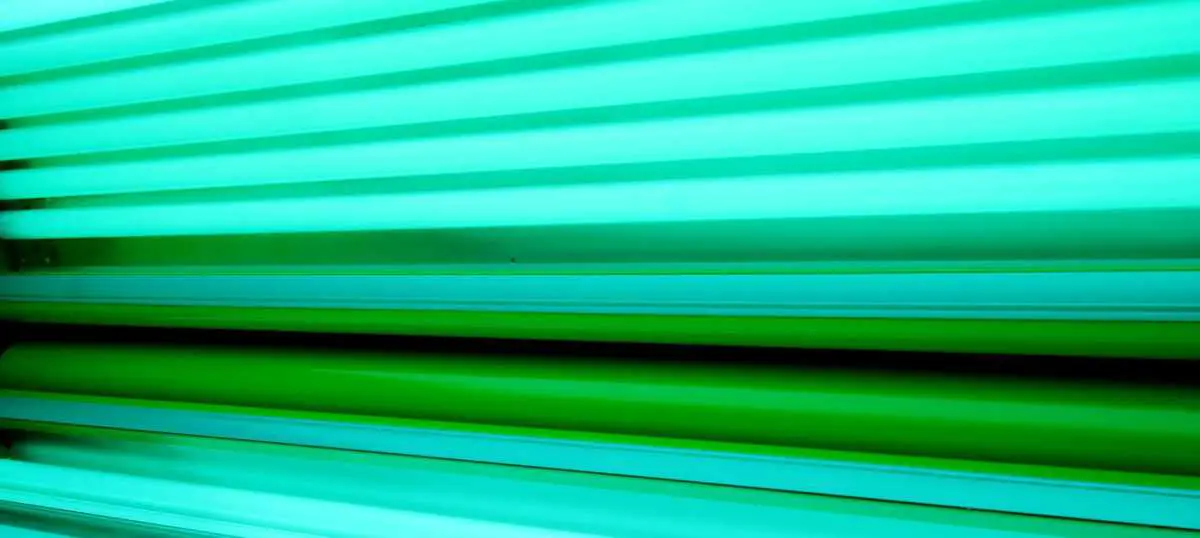We are all becoming increasingly aware of indoor air quality. Most of us spend almost 90% of our time indoors either at home or at work and the health effects of air pollution are becoming more obvious. Understandably the use of ultraviolet (UV) light to destroy viruses has led to the development of many UV air purifiers.
Fortunately, electronic air purifiers using HEPA filtration are very effective at removing airborne particulates. It is these particles for which are the major cause of damage to our health. The smallest particles can even enter our bloodstream!
Portable air purifiers based on HEPA filtration technology can not only remove inert particles but also remove virus from the air. This approach was shown during the SARS outbreak to reduce infection from SARS virus. However, following the COVID pandemic people have naturally been interested in any additional air purification technologies which may help destroy virus particles in the air.
Ultraviolet (UV) light is one such technology. It is known to damage the genetic material of microorganisms. This includes not only viruses but also airborne bacteria and other airborne pathogens such as fungi, though fungal spores are resistant. So it may seem a good idea to incorporate a UV light into a fan/filter based air purifier.
However, there are problems with this approach. The speed of the air traveling past the UV light to provide adequate filtration of particles out of the air means that any microorganisms are only irradiated by the UV light for a very short period of time. This limits the effectiveness of the UV light. As an alternative use of UV rays to purify air, there are air sterilizers. These simply have UV light with a low flow fan and no filter-please see this post.
As a general rule you should not buy an air purifier based on the presence of a UV light. The central factors in choosing an air purifier are the efficiency of the filter and the airflow through the filter. A high flow of air cleans more air, but makes air purification by UV light in air purifiers less effective.
The EPA states that a UV-C alone in an air purifier is not effective. The purifier needs to have a fan and HEPA filter as the basic mechanism.
There are 2 ways that the ultraviolet irradiation can help purify the air. The first is by direct sterilization effect in the second by photocatalytic oxidation.
1)Direct Sterilization
Germicidal UV light is been used for more than 100 years in sterilization, especially for treating municipal water. Electromagnetic radiation ranges from radio waves through the visible spectrum to gamma rays. The higher the frequency of radiation, the more energy it possesses. So X-rays and UV light has much more energy than radio waves, microwaves or infra-red light.

In fact, the energy from UVC light is enough to disrupt the genetic material (DNA and RNA) of bacteria, viruses and fungi (mold). Fungal spores are particularly resistant but all microorganisms need to be irradiated for sometime to allow for enough energy transfer to damage DNA/RNA. Once the DNA/RNA is damaged, the cell may self destruct or at least not be able to multiply.
There are at least three different types of UV-light: UV-A, UV-B, and UV-C. UV-C has the highest energy and so is used for sterilization. Where is it would take minutes to be sunburnt with UV-B light, it takes seconds with UV-C light. Research is currently ongoing on into a different form of UV Light, far UV-C, that may not be damaging to the skin. This possibility of skin damage is important if you are accidentally exposed to it.
The power of the UVC light is such that if wiring in the air purifier is exposed to the UVC light, then it may over time degrade. This also applies to the plastic of the air purifier casing. So that if the casing is made of the wrong materials, unwanted chemicals may be released into your room air. So if you do buy an air purifier with a UV light, you should buy one from a reputable manufacturer.
Passing air past a UV light bulb alone is not very effective for improving indoor air quality. This is because as there is no filter there is no way for the device to remove inert airborne particles from the air. So you should not buy an air purifier/sterilizer that solely uses UV light; the unit needs to have a filter and a fan driving air through the filter to remove particulates. Another advantage of a fan/filter type of air purifier is that it can also contain an activated carbon filter for removing chemicals from the air.
Micro-organisms Need to be Irradiated by the UV Light for Some Time for Their Genetic Material to be Damaged
To inactivate the bacterium E Coli, it took 1-2 minutes at a range of 1 inch-
Also, exposing a previous SARS virus to ultraviolet germicidal irradiation for 10 minutes is enough to inactivate it. However, fungal and bacterial spores are very resistant to UV light and it is unlikely that they would be affected by a UV light in an air purifier. Ten minutes is far longer than air could be in an air purifier that is cleaning enough air.
a) Use of UV Light in an Air Purifier
Problems With Using UV Light in an Air Purifier
- To remove particulate matter from the air, air needs to be forced through a HEPA purifier quickly to process as much air as possible per minute. Improving the air quality adequately means that the air in the room should be filtered through a true HEPA filter 5 times per hour. An air purifier in a large room will need to process 200 cubic feet per minute. This means that air is going through the purifier at a rate of 3.3 cubic feet per second. So the air containing the microorganism will only be exposed to UV light from the UVC lamp in the purifier for a fraction of a second-much less than the time needed to inactivate it. This limits the effectiveness of UV sterilization.
- Another factor limiting the effectiveness of UV sterilization may be the current designs of UV electronics. For instance, the relatively low power of the UV lights. Some experts feel that in 2020 it would be inadvisable to buy a consumer UV sterilizer. This is because there has not been enough scientific work done to prove their effectiveness.
Please note in HVAC systems the use of UV light is for a slightly different purpose. It is to stop fungi growing on the air conditioner coils where moisture can collect rather than to sterilize the air in the system.
So there is a conflict between the high airflows needed for filtering particles out of the air and the slower air flows which would be ideal for UV sterilization of the air. This can be clearly demonstrated by this calculation-
Calculation Showing the Effect of Needing a Minimum Period for Microorganisms to be Inactivated on Air Flow Through an Air Purifier
The following calculation shows how slowly the air would have to travel through a UV purifier to inactivate most bacteria/viruses-
UV Lamp Power=4w ie 4000mW
UV Power Density (watts/cm2) at Outer Edge of Purifier (to make sure all of bacteria/viruses are killed ie they cannot slip by even if they are at the furthest distance possible from the UV light).
Assuming a cylindrical air purifier of diameter 20cm with a cylindrical light at the center and that light is 20cm long-
Surface area of cylinder without ends=2Pi x radius x length of UV light=44/7 x 10 x 20=1257cm2
So Power Density on outer surface of cylinder=4000/1257=3.18 mWatts/cm2
Amount of UV Energy Needed to Kill Bacteria/Viruses-200-8000 uW.s/cm2 ie 8 mWatt.s/cm2
So time at outer edge of the air purifier for a Bacterium/Virus to be killed=8/3.18=2.52 seconds
CADR (clean air delivery rate) of Such an Air Purifier
Velocity of Air in Purifier=(length of passage in UV light) / (time needed for air to pass slowly enough for bacteria to be killed)
=20/2.52 =7.9 cm/sec
If the air purifier is a 20cm diameter cylinder -Surface area of cross section=Pi x r2 = 22/7 x10 x 10 =314cm2=0.03m2
So air flow (in m3/sec)=surface area of cross section of purifier x velocity of air=0.03 x 0.079=0.0023m3/sec
ie 60x 0.0023 m3/sec = 0.14 m3/min = 0.14 x 35.3 cuft/min = 5 cuft/min
So the air purifier CADR is 5 cuft/min and would only be able to purify the air in a room 5ft by 2ft ie a cupboard!
So you can see that the need for slow air flow through the purifier needed for UV light to destroy bacteria/viruses mean that their ability to process the air through the filter is very constrained.
If the UV light was 20 times more powerful, then the sterilizing effect of UV light would be effective. However, the electricity consumption of the air-purifier would be more than twice that of a normal fan/filter device. Also, the purifier may become a fire hazard!
Many Established and Most Respected Manufactures of Air Purifiers do Not Even Have a UV Model in Their Consumer Range
Many of the most established and respected manufacturers of air purifiers for example iQair, BlueAir, Medify, Honeywell, Coway AirMega, Levoit, and SmartAir do not even have an air purifier using UV light in their range.
If these manufacturers had found in testing that UV lights added significantly to the efficiency of the purifier, surely they would have incorporated them into at least one model in their range?
So if you do by an air purifier with UV light, you may be trading off the quality of HEPA filtration and the power of the fan for the UV light.
Neither do air purifiers with UV lights figure highly in respected reviews from either Wirecutter or Consumer Reports.

The UV Light in a Consumer UV Air Purifier Does Not Have Enough Energy to Produce Significant Amounts of Ozone Which Can Damage Health
It is well-known that ozone can damage health and UV radiation can split oxygen molecules (O2) apart into two atoms. These atoms try to combine with another oxygen atom, and usually they find an oxygen atom in an oxygen molecule to combine with. This forms a three atom molecule with three oxygen atoms linked together – ozone(O3). Ozone is known to damage health.
The UV lights used in air sterilizers or air purifiers work at a wavelength of 253 nm. Ozone is only produced with wavelengths of much higher energy, i.e. below 200 nm.
In addition, most manufacturers produce their UV lights with quartz glass which blocks wavelengths of UV light below 200 nm. So it allows the germicidal UV light to pass through, but blocks the light that would cause ozone. In fact, there is evidence that at the germicidal wavelength ozone is actually broken down.
The UV Bulb Will Need Replacing Causing Added Maintenance and Expense
The UV bulbs usually need replacing annually. When changing the UV light, you should be careful that no one switches the power on whilst the appliance is open. The FDA has advised that there is a risk of eye damage and skin burns with exposure to UVC light. The presence of an electric bulb in the purifier emitting energy could lead to a fire hazard, although at current wattages this is unlikely.
b) Use of UV Light in the Form of a UV Sterilizer
This is covered in this “how does an air sterilizer work”. These units can be seen in shops near the meat counter and commercial premises but are not really for domestic use. This could be thought of as a “UV purifier” but this would confuse it with the normal fan/HEPA filter air purifiers with an additional UV light. So it is probably best to refer to these UV lights mounted on walls irradiating areas as “sterilizers”.
They are also used in hospitals where they have been shown to reduce bacterial infection 50%. This is sometimes used by websites as a reason for having an air purifier with a UV light. The problem is that the UV sterilizers used in this hospital study were 48 inches tall by 24 inches wide! Also, they trickled air through the unit too slowly to be effective as an air purifier, even if they had an effective filter in them.
So they had an enormous surface area and trickled air slowly over the UV lights. UV lights in a consumer air purifier are often only 1/16th of the surface area and will need an air flow 4 times this rate so they will be 1/16 x 1/4 ie 1.6% as effective as these hospital units.
UV sterilizers have been used in hospitals, especially during the COVID-19 pandemic for cleaning surfaces. Also, wall mounted units have been found to be anti microbial with no problems from the UV exposure.
Neither of the above uses of UV light has any affect on house dust mite or pet dander.
c) Use of UV Light in HVAC Systems
UV light can be very useful in HVAC systems, principally for keeping the cooling coils free of fungal (mold) growth. I have written an article about this and came to the conclusion that they are an effective, affordable and useful addition to any HVAC system.
2)Photocatalytic oxidation (PCO)-Uses UV Radiation
Photochemical Oxidation uses a high-surface-area catalyst such as titanium dioxide to absorb gases. When the catalyst is irradiated with UV light, hydroxyl irons are produced. These then oxidize the gases absorbed onto the photo catalyst. A problem with this approach is that harmful substances can be produced. Examples being as acetaldehyde, formaldehyde, nitrogen dioxide and carbon monoxide can be produced. Chlorinated VOCs can even produce phosgene. This type of air cleaner can produce ozone if the UV light does not have a coating to prevent it.
The EPA report that PCO air cleaners are often ineffective at completely transforming gases found indoors. Therefore, some PCO cleaners have absorbent media air filters downstream to absorb gases and generated byproducts. There are a few field studies and the laboratory studies show high variability. Often there is low removal efficiency for many common indoor gases.
The efficiency of PCO air cleaners depends on three factors. The amount of catalyst, contact time between the pollutants and catalyst, and amount of UV light delivered to the catalyst. So again there is a tension between airflow and efficiency. A low airflow allows for greater efficiency but less cleaning of the air in the room and vice versa. So PCO based air purifiers can be inefficient and even produce toxic chemicals. The EPA suggests that “further research is needed to further advance PCO as an effective technology in removing low levels of gaseous contaminants from the indoor air of residences”.
The same function of removing gases from the atmosphere can be accomplished simply with a charcoal filter in a standard HEPA air purifier. This is a high efficiency approach which will not generate any harmful chemicals. The filter will however need changing periodically this usually needs to be done every 6 months to 2 years depending on which air purifier you buy.
Some Other Air Purifying Technologies Are Not Known to be Helpful Against Virus
An ionizer used in an ionic purifier, and electrostatic plates attach negative charges to particles these then are attracted to positive electrodes or earthed electrodes where they stick. These have not been shown to be effective against virus, bacteria or fungi in the air.
Ozone generators create ozone which generates free radicals which damage biological tissue. At the concentrations needed to damage micro-organisms, the ozone would damage our lungs. So this is not a viable option.
Summary
Although UV air purifiers are safe, but is probably not significantly more effective than a normal fan/filter purifier at reducing indoor air pollution. To work effectively according to the EPA, based on laboratory studies, an air purifier should have a HEPA filter through which air is pushed by a fan. A high flow of air through the filter cleans the room more effectively but makes reduces the effectiveness of UV light to destroy the DNA of micro-organisms. Even without an ultraviolet light, a good HEPA filter is enough to efficiently remove virus from the air.
Purifying the air in a room is surprisingly difficult. So it is important to buy the absolute best fan/air filter air purifier that you can. There is a risk that you may not buy the best fan/filter air purifier if you will only consider those with UV lights.
Related Questions
Related Articles
UV Light in an HVAC System-5 Important Improvements for Your Home-an article explaining why everyone should consider having a UV light in their HVAC system


